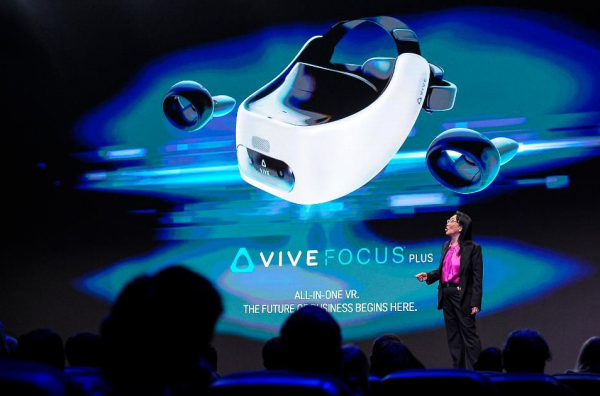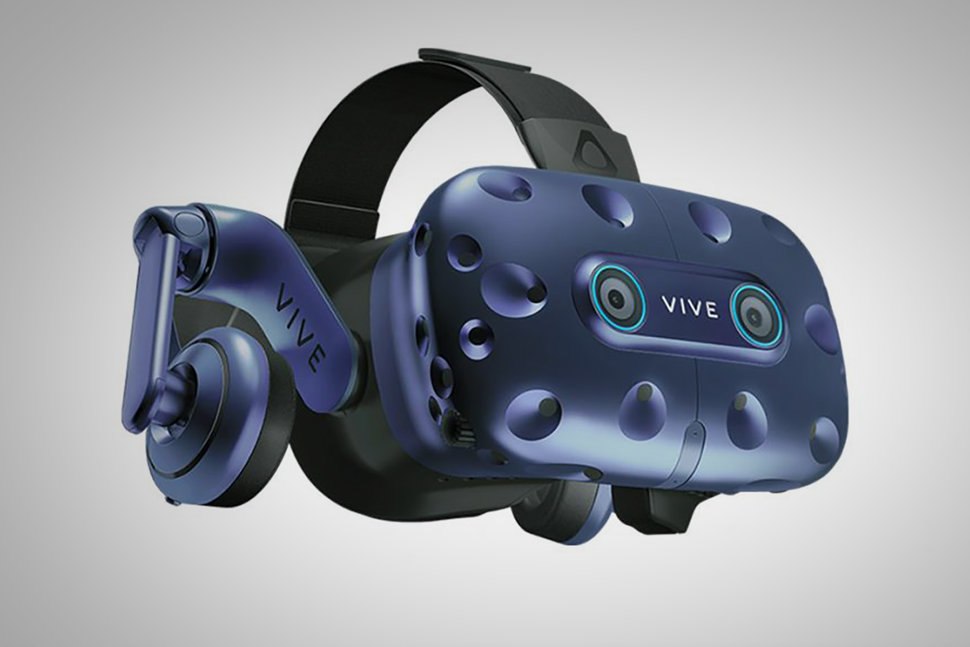HTC Sees Its Future in the High-End Enterprise Virtual Reality Market
HTC was once a powerhouse in the smartphone market but the Taiwanese tech giant has since pivoted to virtual reality after the hollowing out of its market share by nimbler rivals. HTC’s smartphone market share once stood at 10.7% in 2011 but has since shrunk to just 0.1% in 2018.
Over the past four years, HTC has been focusing on manufacturing virtual reality gear along with other emerging technologies to regain a foothold in the high-tech sector. Its latest move has been the announcement of its standalone virtual reality headset, the HTC Vive Focus Plus which it will give users greater clarity thanks to its power specs.

As a standalone gadget, the headset can also be used freely independent of PCs or smartphones thereby offering users complete freedom of connection and interaction.
HTC is not just pivoting towards virtual reality and other immersive technologies and away from the smartphone market. Even within the VR industry, HTC is beginning to pull away from close rivals and pivot towards the higher end enterprise virtual reality headsets. This is in stark contrast to Oculus which sees the virtual reality market through the consumer lens. Facebook founder and CEO Mark Zuckerberg has stated in the past that he wants to see one billion people using virtual reality and the only way to realize that will be by going for scale.
This is why while HTC has been shifting focus towards the enterprise market, Oculus has been busy building consumer-focused virtual reality headsets such as the Oculus Quest and Rift S that retail at roughly $400 and which are expected to hit the market this spring. HTC is building premium virtual reality headsets that cost as much as $1400 and which pack quite punch while Facebook is able to hit the lower price-point by making certain quality and performance trade-offs through lower framerates, slower graphics, reduced resolutions and slower processing power than what is available in some of the top of the line virtual reality headsets.
Oculus is hoping to make up in scale what it sacrifices in performance. The virtual reality company is betting on the premise that it may be able to radically improve performance in the future once it has built the scale and mass appeal for VR.

HTC’s new wave of high performance VR gadgets will not be enough to pad its revenues from the smartphone losses or give it an edge over Oculus whose headsets which offer largely the same hardware specifications, cost less and leverage Facebook’s mammoth reach for marketing. By targeting business users, HTC is losing out on the lucrative gaming market which currently sells most devices.
HTC is taking just the opposite path by going high-end and targeting a small niche market. The Taiwanese tech company is betting on the expectation that the enterprise market will win over the long term and the high cost will therefore not be a serious hurdle if it can deliver high performance to its business customers who have exacting standards quality-wise. Its virtual reality products cost upwards of $1,399 before even factoring in the gaming computer that will be required to operate the virtual reality headset. Even HTC’s standalone VR headset Vive Focus goes for $599 and its closest rival, the Oculus Go, goes for $200.
HTC is offering users certain performance advantages. The Vive Focus Plus delivers sharper imagery and has a new and updated lens that allows users to seamlessly interact with the virtual environment with a relative degree of freedom. Like other HTC products, the Vive Focus Plus is targeted at commercial users and will be released on Vive’s website and in 25 other markets.
With the upcoming launch of the HTC Vive Pro Eye and its Focus Plus virtual reality headsets, the Taiwanese company is going to drive its immersive technology to a whole new level. HTC is more focused on the enterprise market where companies will be more than willing to fork top dollars for top performance.
The standalone virtual reality headsets will become the main and most preferred VR headset types in the years to come so hardware vendors will shift to manufacturing these over other headset forms. Standalone headsets are preferred by buyers looking for a VR experience but who lack the requisite hardware such as consoles or high-end PCs.
Corporations, generally, are more quality-oriented than they are price oriented. Many will pay hundreds of thousands of dollars or millions of dollars for top quality custom virtual reality content. Targeting enterprise market means HTC is going to lose once more, like it did in the smartphone market, to rivals such as Oculus that are going for scale with slightly watered down specs. However, high performance and high prices also means that the tech company will be generating more money per sale and if it can zone in on a sustainable niche of enterprise customers, its strategy may still pay off over the long haul.
HTC hardware will do particularly well in the Asia-Pacific region where Oculus is yet to make a strong presence. However, the headsets are likely to struggle later on due to stiff competition from the lower-priced and consumer-focused models.
https://virtualrealitytimes.com/2019/04/22/htc-sees-its-future-in-the-high-end-enterprise-virtual-reality-market/https://virtualrealitytimes.com/wp-content/uploads/2019/03/The-HTC-Vive-Focus-Plus-600x337.jpghttps://virtualrealitytimes.com/wp-content/uploads/2019/03/The-HTC-Vive-Focus-Plus-150x90.jpgHardwareHTC ViveHTC Vive Focus PlusVR HeadsetsHTC was once a powerhouse in the smartphone market but the Taiwanese tech giant has since pivoted to virtual reality after the hollowing out of its market share by nimbler rivals. HTC’s smartphone market share once stood at 10.7% in 2011 but has since shrunk to just 0.1% in...Sam OchanjiSam Ochanji[email protected]EditorVirtual Reality Times - Metaverse & VR
